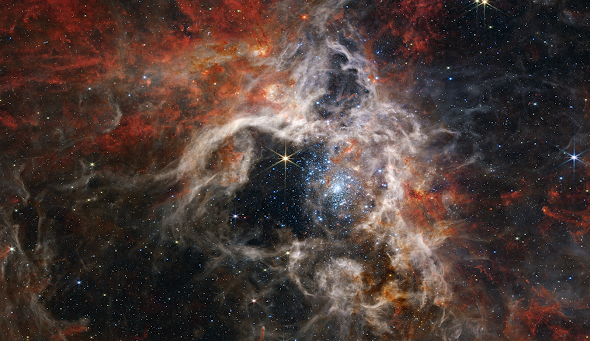Re-creation
In class this Tuesday, we discussed how, in many ways, the flood and the story of Noah’s ark is a “redo” of creation. However, before considering this redo of creation, it would likely be helpful to consider God’s original attempt at creation.
On the second day, God specifically made Heaven, “the firmament”, a boundary to divide the waters above and below “the firmament” (1:7-8). Then, on the third day, God divided the waters from the dry land, calling the former “Seas” and the latter “Earth” (1:9-10). As a result, the second and third days are perfect examples of a systematic pattern of division that God undertakes as he undergoes the creation of everything. Therefore, problems begin in God’s eyes when his creations begin to intermingle, especially when that mingling involves people. Adam and Eve eat the fruit “of the tree of the knowledge of good and evil”, a tree giving them divine knowledge about incredibly important things such as their nakedness, and God is forced to separate man permanently from Himself as I discussed in my last post “Two Realities” (2:17). God is also displeased by “sons of God”, angels, taking “daughters of men” to wife and bearing children to them as such is a mixture of the divine and man (6:2). In response, God vows to shorten man’s lifespan to a measly 120 years when men like Methuselah could live as long as 969 years in the past, further separating his “spirit” from them by confining them to a much more mortal life (6:3).
All of this is to say that God tries very hard to maintain division among his creations, and when man works to eliminate his divisions, He retaliates with more firm separation. However, the one exception to this trend is God’s flooding of the Earth. Here, instead of maintaining division, he allows for the waters above “the firmament” of Heaven to reunite with the waters of Earth, thereby allowing for the “Seas” to overtake the Earth. The lack of division is disastrous and “every living substance [is] destroyed” during the flood of the Earth, except for that substance aboard Noah’s Ark (7:23). Such a cataclysmic event gives us a taste of what a lack of division entails for life as we know it and seems to indicate that God’s division is of the utmost importance to maintain. However, the flood also represents a second try at creation, one in which God makes a covenant with Noah to never again let “all flesh be cut off any more by the waters of a flood” and acts more gently towards humans as a result (9:11). For instance, while God is still inclined to maintain division when faced with the Tower of Babel, a feat of human ingenuity so great that it would allow man to reach Heaven, God does not directly change their level of mortality or proximity to divinity as he did by shortening the human lifespan or kicking Adam and Eve out of the Garden of Eden. Instead, God simply creates division among mankind by “confound[ing] their language” and “scatter[ing] them abroad” so that they cannot work together with their previous efficiency (11:7-8). While this is unideal, it is not a fundamental reworking of God’s relationship with man or man’s vitality. It simply serves to temper man’s manipulation of the world, forcing him to be simpler through imperfect communication, just as the flood eliminated the mighty giants and great human-angel Nephilim from Earth leaving behind only the normal, perfectly non magical world we know today.
I bring up all of this analysis to tie back into a recent photo by JWST showcasing the Tarantula Nebula, the breeding grounds for the hottest and most massive stars that we have observed. The Tarantula Nebula is the largest and brightest stellar nursery close to our galaxy, and its conditions for star formation are similar to that of gargantuan regions that existed billions of years ago during a period called “cosmic noon” when star formation in the universe was at its peak. In this way, the Tarantula Nebula mirrors a time long gone; it is a recreation of creation itself. Though, at the same time, the Tarantula Nebula will never be as grand or beautiful as the entire universe was during “cosmic noon”. After all, the universe continues to expand, making it harder for matter to coalesce as stars, and hydrogen continues to fuse into helium and other heavy elements, exhausting the finite supply of star fuel within our universe. Just as the Tarantula Nebula is a second-rate recreation of creation, mankind after Noah’s flood is forever limited by its past punishments from God. Never again can we walk into the garden of Eden, live almost a millennium, or witness mythical creatures like giants, unicorns, and Nephilim. Alas, we have to make the most of the reality we have, though looking at the Tarantula Nebula, maybe that’s not too bad.
Works Cited:
Marks, Herbert. The English Bible: King James Version. Norton, 2012.
NASA's James Webb Space Telescope. “A Cosmic Tarantula, Caught by NASA's Webb.” Flickr, Yahoo!, 6 Sept. 2022, https://www.flickr.com/photos/nasawebbtelescope/52338778943/in/photostream/.

Comments
Post a Comment